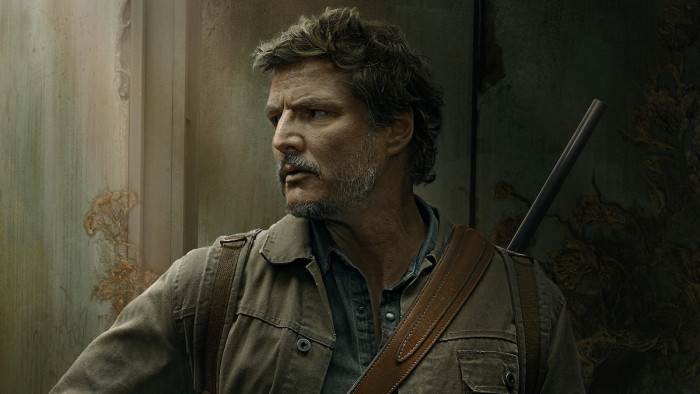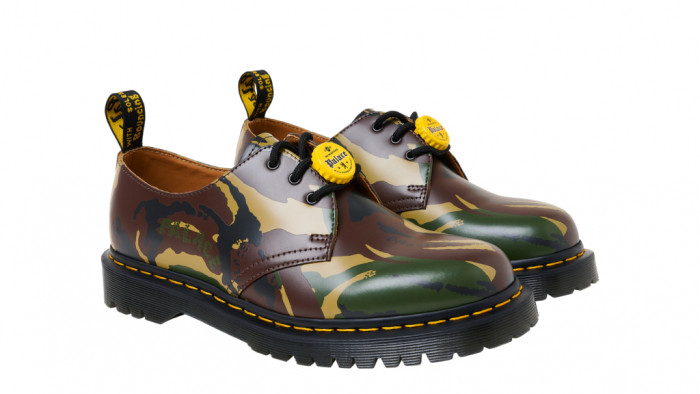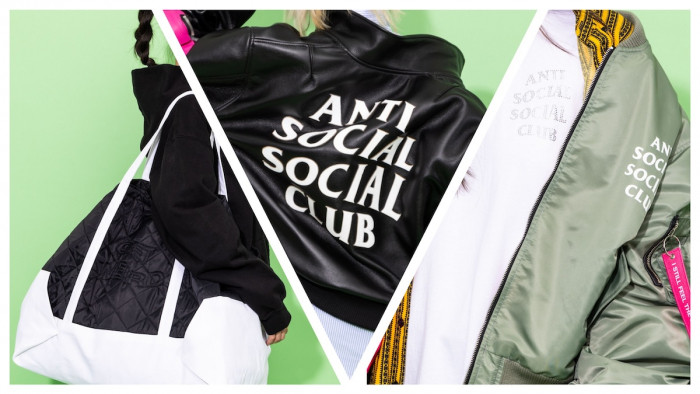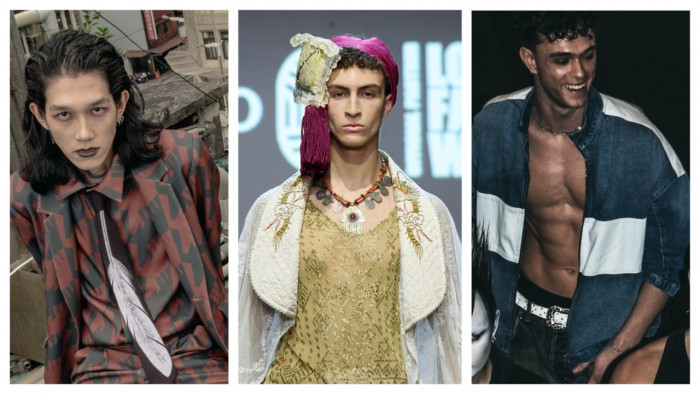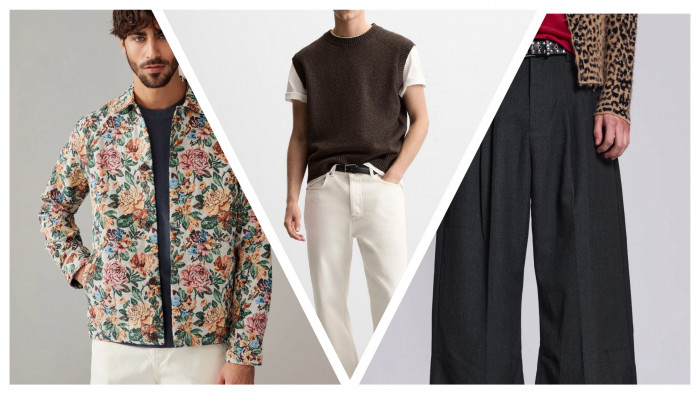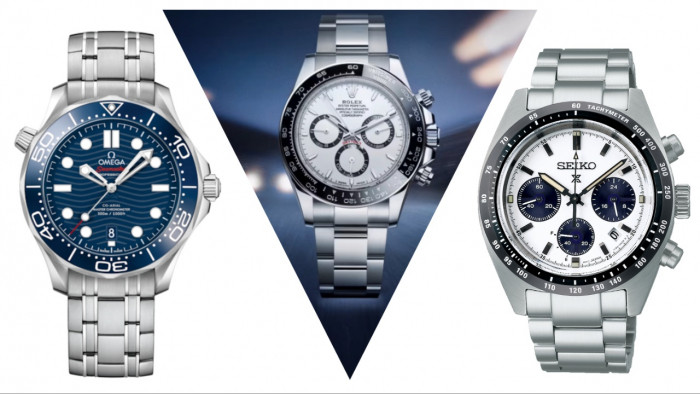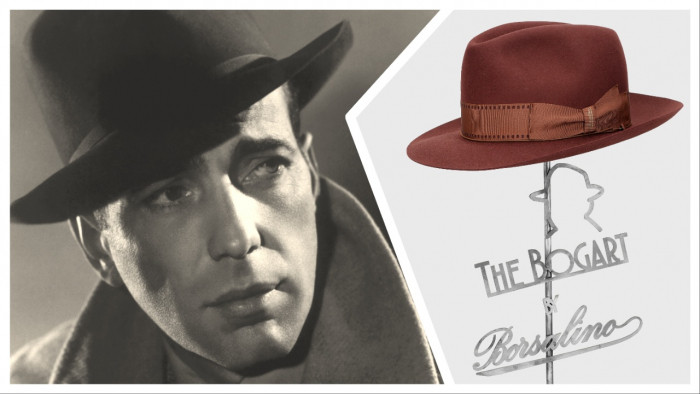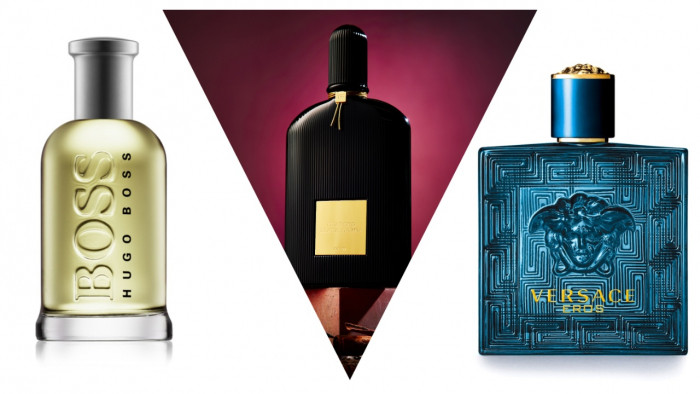Jagger’s trousers? Ferry’s lapels? Antony Price was behind them all. Iain R Webb looks at the designer’s influence
Predating David Bowie’s Aladdin Sane and The Stooges’ Raw Power by a crucial six months or so, the sleeve of Lou Reed’s second solo album, Transformer, from 1972, is the first of the truly definitive, enduring glam rock images.
Its gold-edged, monochrome Mick Rock photograph of a blank staring, kohl-eyed Lou Reed perfectly encapsulates the cheap, street-smart, grubby-yet-glamorous world being revealed in songs such as the opening Vicious (“You hit me with a flower/You do it every hour”).
Less consistently celebrated and referenced, though equally important, is the back cover. Alongside model Gala Mitchell posing provocatively in a black see-through blouse sits a photograph of a seemingly well-endowed young man (he had a banana stuffed down his trousers) dressed in a tight white T-shirt with a cigarette packet nonchalantly tucked up one sleeve, even tighter blue jeans and peaked leather cap. The picture is a postmodern patchwork of style references – part Tom Of Finland, part Kenneth Anger, John Schlesinger’s Midnight Cowboy meets Andy Warhol’s My Hustler. It is also the work of Antony Price, a man who has – rightly – been described as the most influential designer of the Seventies. And beyond.

Today, Price’s brand of expressive flamboyance and flair continues to inspire the louche, sensual silhouettes of designers as disparate as JW Anderson, Dries Van Noten, Haider Ackermann, Lanvin, Lou Dalton, Kim Jones for Louis Vuitton, Versace and Topman Design.
THE PRETTIEST STAR
Part of the experimental British Art School system of the Sixties that nurtured creativity and self-expression and became a melting pot for art, fashion and music, Price studied at the Royal College of Art (starting as designer Ossie Clark was leaving). For his graduation menswear collection from 1968, he modelled a ‘lean, belted and double-breasted’ leather midi-coat, sharp-collared shirt, straight tweed trousers (with sizeable turn-ups), matching rib-hugging waistcoat and an oversized baker-boy cap. On his neck, a knotted chiffon scarf. The ‘forward thinking’ collection also featured python-print vinyl wallpaper, tailored into a single-breasted jacket worn over a nylon ciré jumpsuit. Vogue took notice and featured the designs.
Price worked briefly for costumier Berman’s & Nathan’s (given his theatrical bent, not surprisingly), before getting a job alongside womenswear designer Jane Whiteside at the hip-and-happening fashion label Stirling Cooper (nothing to do with Mad Men). The pair decorated the central London store with Oriental designs (customers entered via a dragon’s mouth), and it became a mecca for fashion fans including Mick Jagger and The Rolling Stones, who bought stage gear for their 1969 Gimme Shelter tour. As he wiggled his way around the world, Jagger wore Price’s side-buttoning, snake-hip flared trousers. Yet Price’s designs weren’t just for an elite celebrity clientele; the clothes he created in the Sixties and Seventies for high-street labels Stirling Cooper, Che Guevara and Plaza were as likely to be worn by a bricklayer in Birmingham as rock stars on Kings Road.

STUDS AND STARLETS
Price is credited with inventing the cap sleeve T-shirt. One version came with zips on the shoulders (a precursor to the punk look), another in skin-tight leopard print. Trashy and flashy, they were perfect for a new generation of bright young things looking to express themselves in the only way they knew how: through their wardrobes. “That T-shirt was the shape of a guy and they sold absolutely millions,” said Price.
Its success afforded him the opportunity to take over the Plaza store at the end of Kings Road, just around the corner from the World’s End shop owned by Malcolm McLaren and Vivienne Westwood. Plaza, described by Vogue as, “a whole new concept of retailing, no less”, was as revolutionary as his designs.
Billed as ‘Clothes for Studs and Starlets’, it featured dark blue glass doors that threatened people to enter. If you weren't brave enough to go inside then you wouldn’t be man enough to wear Price's far-out styles. What’s more, the future had landed inside, where everything was ‘Tone Styled’ and instead of hanging from racks, clothes were stapled on to boards identified with a code number and ordered from extremely photogenic shop assistants through a hatch.
“I made the store like a hamburger joint, where you point to a picture, then someone measures you, goes down, gets one, brings it up and you try it on in the changing room,” Price explained. “It was perfect, they couldn’t nick it.”
Among the designs was Male No9, Price’s infamous ‘Arse Pants’. These trousers displayed Price's tailoring skills; cut and seamed so that your bum looked pert while round the front your crotch was lifted with Wonderbra-style results. Plaza’s window featured projections of Price’s models, all cheekbones and square-jawed.
Vogue reported “sharp waists, shapely contours, smart suits and flashy evenings”. In the same story writer Marit Lieberson noted that Price “prefers to dress men, knows what they want”.
MAKE ME A DEAL…
With a taste for exaggerated glamour, Price cleverly constructs his clothes to sculpt the body to almost cartoon proportions. The designer adores the silver-screen stars of yesteryear – men with broad shoulders, women with hourglass curves – and he works like a film director, art director, designer and stylist rolled into one, tailoring his ideal silhouettes.
Paul Gorman, author of The Look: Adventures In Rock & Pop Fashion, lauds Price’s “technical skill and ability to create a total look”, also noting that it “makes him one of rock’s most influential stylists”, and it was his association with art-school band Roxy Music in the early Seventies that brought the designer to the attention of rock fans the world over. Price is one of the first fashion designers (if not the first) to be credited on a record sleeve, Roxy Music’s eponymous debut album, for “clothes, make-up & hair”.

Style guru Peter York prefers to call him an “image controller”, and the future-retro imagery Price was offering was as experimental as the music captured on the vinyl: slick Teddy Boy quiffs, spikey collars, American football-style shoulders, leopard print and Lurex – a pastiche of the heroes of Fifties B-movies and Marvel comics. Fans not only drooled over the Roxy pin-up cover girls (Kari-Ann Muller as a Fifties Vargas girl, Amanda Lear in a satin pencil skirt and cocktail hat or Jerry Hall in slinky mermaid mode, all custom-made by Price), but they also wanted to dress like the band.
In the postmodern Seventies, role-playing through clothes became fashionable and everything came in inverted commas, a quoting of different, often discordant, styles and eras (again just like the music). In Re-make/Re-model, Roxy Music biographer Michael Bracewell notes that at this time, there was the idea that “you could be something, then something else, then something else”.
FADE TO COLOUR
This style of dressing-up became the blueprint for the Eighties’ New Romantics, who were themselves, for the most part, die-hard Roxy Music fans. Up and down the country, young fans donned shiny, sharp-shouldered matinee-idol suits with neo-military trappings. Price even persuaded tens of thousands of aspiring matinee idols to dye their hair blue/black.
“Roxy were one of the first bands to insist on a non-squalid tour,” says Price. “We were met with horror from the music business, who saw us as prissy, and horror from the fashion business, who saw us as sweaty rock.”
It was Price’s boldface pose and bloody-minded commitment (part of his Yorkshire birthright) that convinced ordinary music fans to dress up to the nines.
When Roxy Music played the Rainbow Theatre in 1974, the NME described the audience as “the avant garde of rock’n’roll haute couture”. The critic noted: “Flat-chested femme fatales and their skinny-hipped chaperones… and fresh-faced fops in white tie and tails.”
One fan told the writer that his white tuxedo and fedora had earned him shouts of “pooftah” at the bus stop. But while the NME ridiculed Ferry because of his penchant for Price’s fancy clothes, the average music-loving bloke outside London still risked life and limb leaving the house looking like an extra from Flash Gordon or Casablanca. Price persuaded men to do so by selling them sex. “If it’s gonna get them laid,” he noted, “they’re gonna buy that suit.”
DINING AND DRESSING
At the same time Price was dressing Roxy Music, David Bowie was being styled in satin and spacesuits by Freddie Burretti, a fellow regular at Kensington’s legendary gay club, Sombrero. Another favourite hangout of Price and Burretti was the Rainbow Room, a 500-capacity Art Deco restaurant and music venue that topped the seven-storey Biba department store. Here, Price rubbed padded shoulders with Zandra Rhodes, Manolo Blahnik and Andrew Logan, and watched acts including New York Dolls, Cockney Rebel, The Pointer Sisters, The Ronettes and Liberace. At the Rainbow Room decadence topped the menu.
“People dined on lobster and champagne,” remembers Price, “and would be shoved into the lifts completely rat-arsed at 10am in the morning.”
From early on, Price’s designs for women were equally as outré. In 1971 Nova magazine ran a feature titled, ‘How To Undress In Front of Your Husband’, that showed a woman stylishly extricating herself from a clingy ciré dress by Price. Janet Street-Porter refers to Price's designs as “result dresses”, and fans include Marie Helvin, Naomi Campbell, Yasmin Le Bon, Tilda Swinton and Kylie Minogue.
Price’s glam look was later snapped up by Eighties pop stars, most famously Duran Duran, while his cult status was championed in 2008 when Topman asked him to create a deluxe range titled ‘Priceless’, bringing the look to a new generation. He has endured. Gordon Richardson, creative director of Topman and a fashion student in the mid-Seventies, puts it best: “There were very few designers I could aspire to who understood the whole sexy notion of fashion and music that’s now so blithely bantered around. Antony Price was out there on his own.”
(Images: John Stoddart/Terry O'Neill/Getty/PA)


